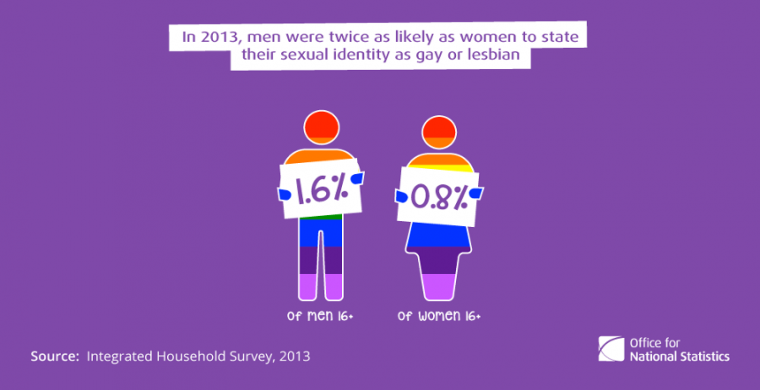Why do we wildly over-estimate the proportion of gays and lesbians?
By Michael Cook
http://www.mercatornet.com/
December 30, 2014
Why do people in the United States (and probably other Western countries, as well) over-estimate the proportion of gays and lesbians in the population? Ever since 1948, when the Kinsey Report suggested 1-in-10, Americans have accepted wildly exaggerated figures. Last year, The Smithsonian, the official web magazine of the famous museum in Washington DC, even suggested that it was 1-in-5!
However, a recent government survey in the United Kingdom found that in 2013, 1.6% of UK adults identified as gay, lesbian or bisexual. This is a very small proportion of the population, but it becomes even smaller when the figures are broken up. Only 1.6% of men identified as gay; only 0.8% of women as lesbians; and 0.5% of men and women as bisexual.
The percentages varied hugely by region. In London the figure for gay, lesbians or bisexual was 3.2% but in the North East region, it was only 1.1%.
How accurate are these statistics? A spokesman for the gay rights group Stonewall suspects that they must be higher: "We don't think the figures are completely accurate yet. People aren't necessarily going to know the sexual orientation of everybody living in a household and some people would not feel comfortable telling a complete stranger their sexuality."
This is quite possible, but corresponding figures for the United States and other countries yield similar results. The Williams Institute, a gay think tank at UCLA Law School, has compared a number of US and international surveys. The lowest overall percentage of gays, lesbians and bisexuals came from the Norwegian Living Conditions Survey (1.2%); the highest from the US National Survey of Sexual Health and Behavior (5.6%). It found that international surveys, which varied from 1.2% to 2.1%, estimated lower percentages of people who identified as gay, lesbian or bisexual than US surveys, which ranged from 1.7% to 5.6%.
Obtaining accurate figures about the size of the LGBT population is a critical first step to informing a host of public policy and research topics. It matters greatly whether the number of people affected by policy changes is 0.1% of the population or 10% of the population.
So it's a bit alarming, then, that the public wildly over-estimates the percentage of people who are LGBT and therefore the number of people who wish to contract same-sex marriages. According to the Gallup polling service in 2002:
"Whether increased acceptance of homosexuality has led to an upsurge in the number of positive media portrayals of gay characters or vice versa, one result seems to be that Americans now tend to overestimate the gay population in America. While most expert estimates place America's homosexual population at 10% or less, Americans tend to guess that the number is higher, around 20%."
About 10 years later another Gallup poll found that public perception had increased still further:
"U.S. adults, on average, estimate that 25% of Americans are gay or lesbian. More specifically, over half of Americans (52%) estimate that at least one in five Americans are gay or lesbian, including 35% who estimate that more than one in four are. Thirty percent put the figure at less than 15%."
What does it mean if people think that the proportion of homosexuals is about 1-in-4, when the figure is really 1-in-100? That the public is so fearful of gays and lesbians that it thinks they are everywhere? That the public has become so sympathetic that it thinks they are everywhere? It's impossible to say. But one thing is sure. Good public policy is based on facts, not ideology. If politicians, journalists and judges are working with wildly over-estimated figures, we are bound to get the worst possible policies.
Michael Cook is editor of MercatorNet














